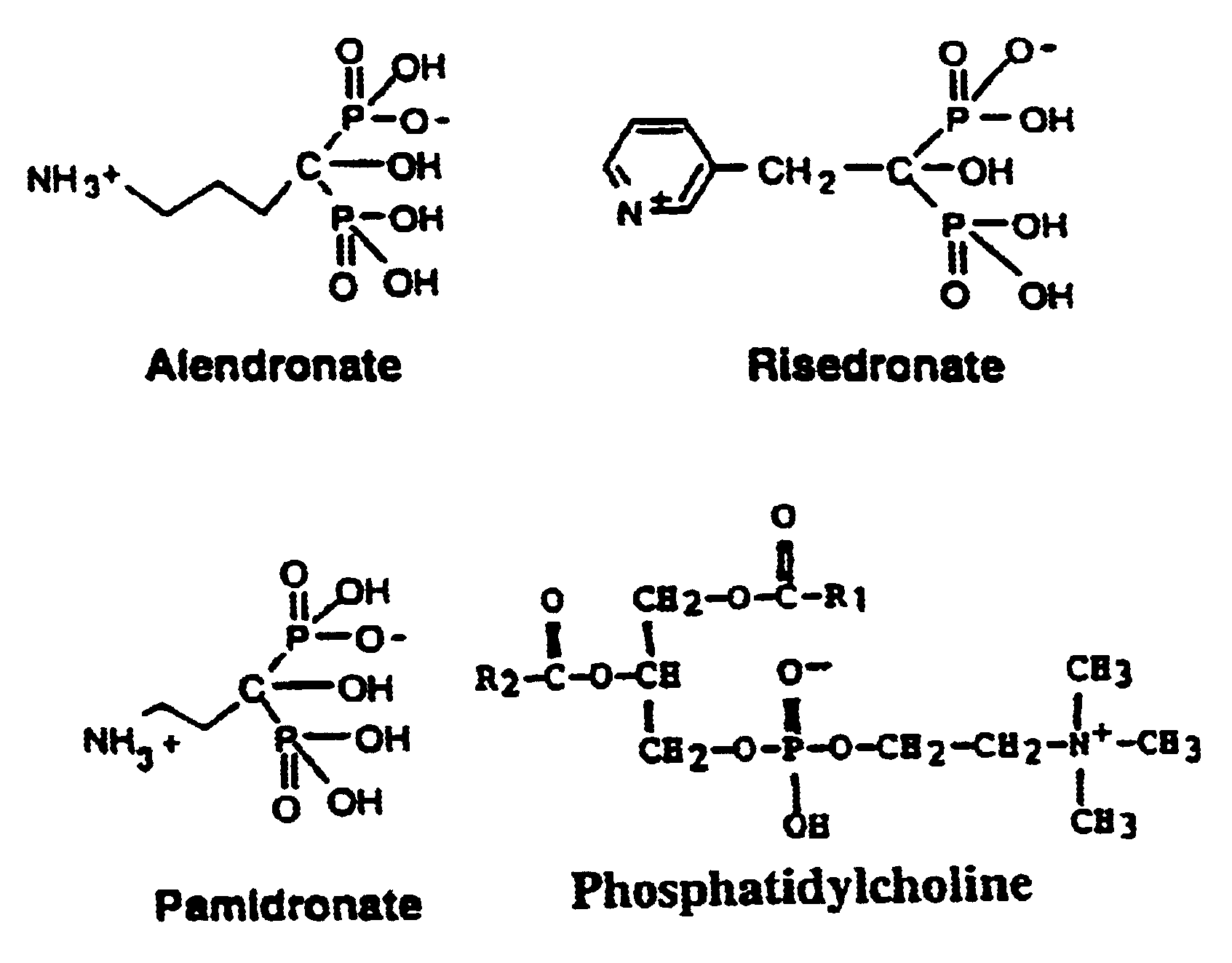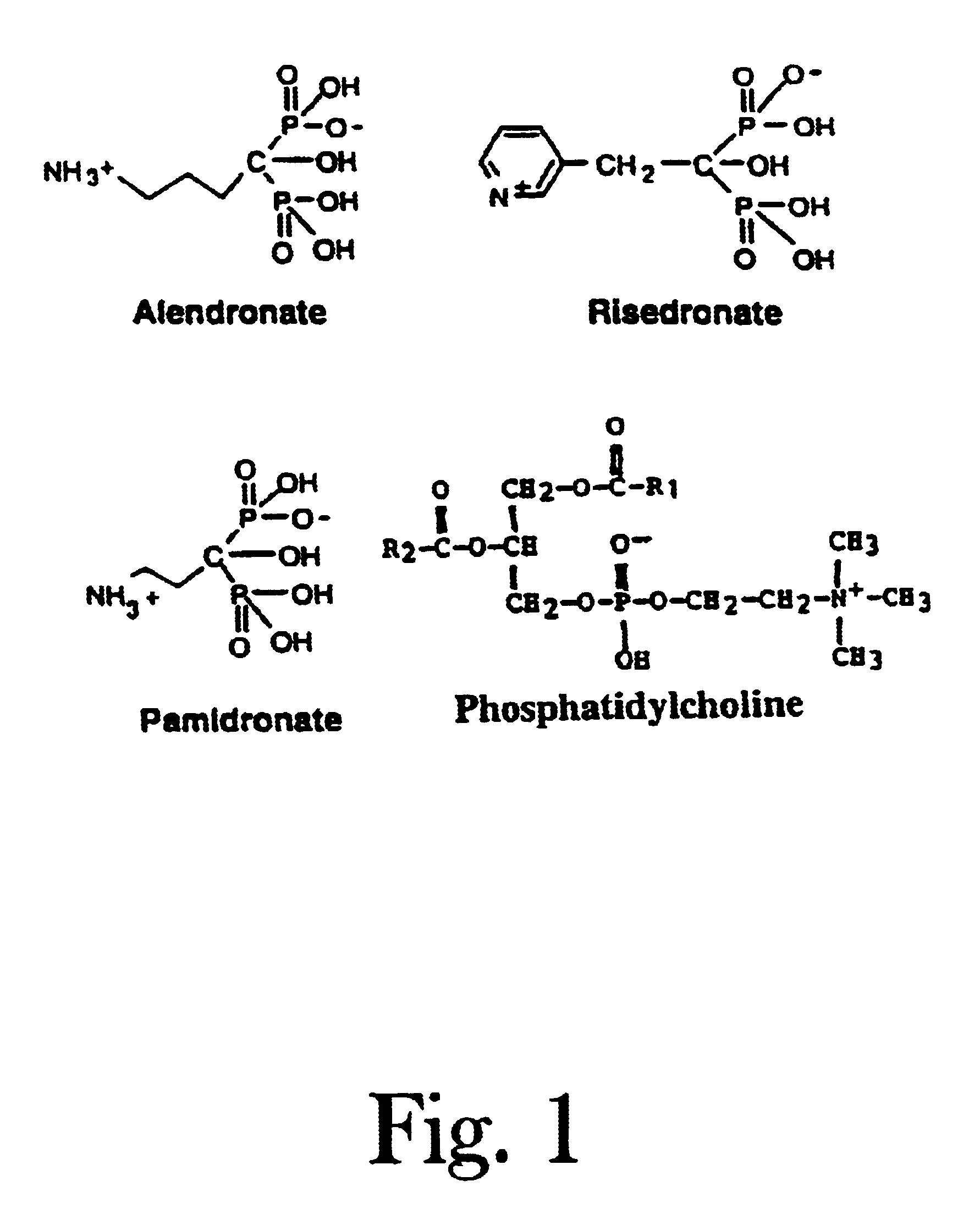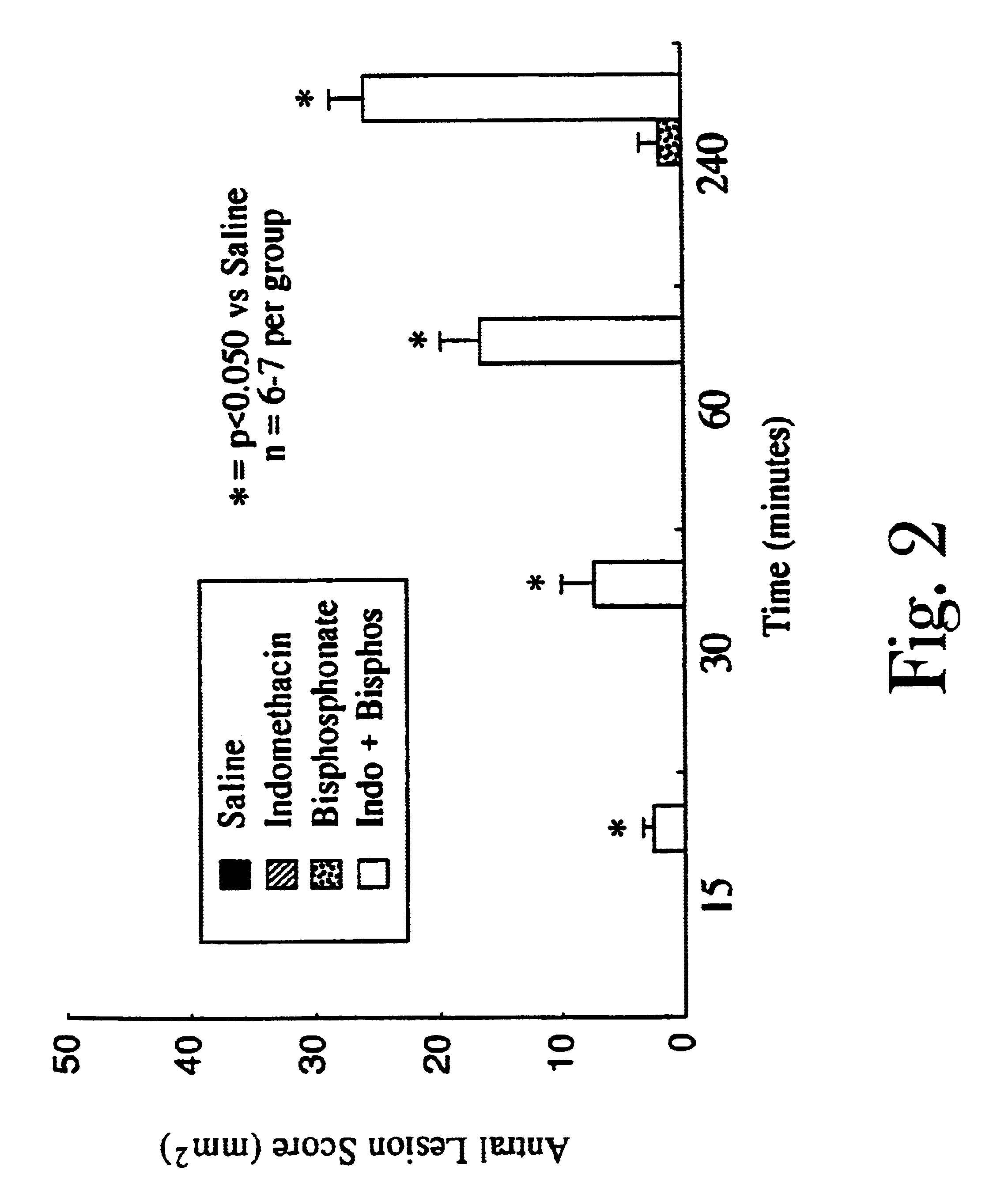Unique compositions of zwitterionic phospholipids and bisphosphonates and use of the compositions as bisphosphate delivery systems with reduced GI toxicity
a technology of zwitterionic phospholipids and bisphosphonates, which is applied in the directions of phosphorous compound active ingredients, drug compositions, biocides, etc., can solve the problems of reducing the bioavailability of bisphosphonates, increasing the risk of developing gi complications, and prone to osteoporosis, so as to reduce the gi toxicity of bisphosphonates and reduce the toxicity of bisphosphonates. , the effect o
- Summary
- Abstract
- Description
- Claims
- Application Information
AI Technical Summary
Benefits of technology
Problems solved by technology
Method used
Image
Examples
example 1
[0101]This example illustrates the preparation of a composition of pamidronate and dipalmitoyl-PC.
[0102]60 mg of Phospholipon 90G (90-93% pure PC) was dissolved in chloroform in a tube. Although chloroform was used, ethanol works as well. The organic solvent was removed under nitrogen and resulting PC material was left under vacuum overnight to form a PC film in the tube. Pamidronate was dissolved in saline and the resulting solution was adjusted to pH 7.0. The solution was then added to the dried PC film in the tube. The mixture was sonicated in a both type sonicator at room temperature for 5 min., prior to administration to fasted rats. The results of this example are reported in Table 1 and were described previously. A thin film of the phospholipid is thought to increase interactions between the phospholipid and bisphosphonates.
example 2
[0103]This example illustrates the preparation of a composition of pamidronate and dipalmitoyl-PC.
[0104]20 mg of dipalmitoyl PC (DPPC) and Phospholipon 90G were dissolved in chloroform in separate tubes, and dried as described in Example 1. A solution of 60 mg / mL of pamidronate in saline adjusted to pH 7 was prepared and added to each of the tubes, one containing the DPPC film and the other containing the PC film. The PC-pamidronate mixture was then sonicated for 5 min. at room temperature, while the DPPC-pamidronate mixture was sonicated for 5 min. at a temperature above 42° C., about 45°. The results of the example are shown in FIG. 7 and described previously.
example 3
[0105]This example illustrates the preparation of a composition of pamidronate and dipalmitoyl-PC.
[0106]60 mg and 240 mg of Phospholipon 90G were dissolved in chloroform and dried as described in Example 1 in separate tubes. A solution of 60 mg / mL of alendronate in saline adjusted to pH 7 was prepared and added to the tubes containing the dried PC film. The mixture as was sonicated for 5 min. at room temperature The results of the example are shown in FIG. 8 and described previously.
Methods for Making Metal-Mediated Bisphosphonate / Phospholipid Compositions
[0107]Another preferred class of compositions of this invention are compositions that include a bisphosphonate, a phospholipid and a metal complex or a colloidal metal, which are generally prepared by contacting a bisphosphonate, a phospholipid and a metal complex or colloidal metal under conditions to promote molecular association of the bisphosphonate and the phospholipid in their zwitterionic forms and the two compounds of the m...
PUM
| Property | Measurement | Unit |
|---|---|---|
| Density | aaaaa | aaaaa |
| Ratio | aaaaa | aaaaa |
| Toxicity | aaaaa | aaaaa |
Abstract
Description
Claims
Application Information
 Login to View More
Login to View More - R&D
- Intellectual Property
- Life Sciences
- Materials
- Tech Scout
- Unparalleled Data Quality
- Higher Quality Content
- 60% Fewer Hallucinations
Browse by: Latest US Patents, China's latest patents, Technical Efficacy Thesaurus, Application Domain, Technology Topic, Popular Technical Reports.
© 2025 PatSnap. All rights reserved.Legal|Privacy policy|Modern Slavery Act Transparency Statement|Sitemap|About US| Contact US: help@patsnap.com



